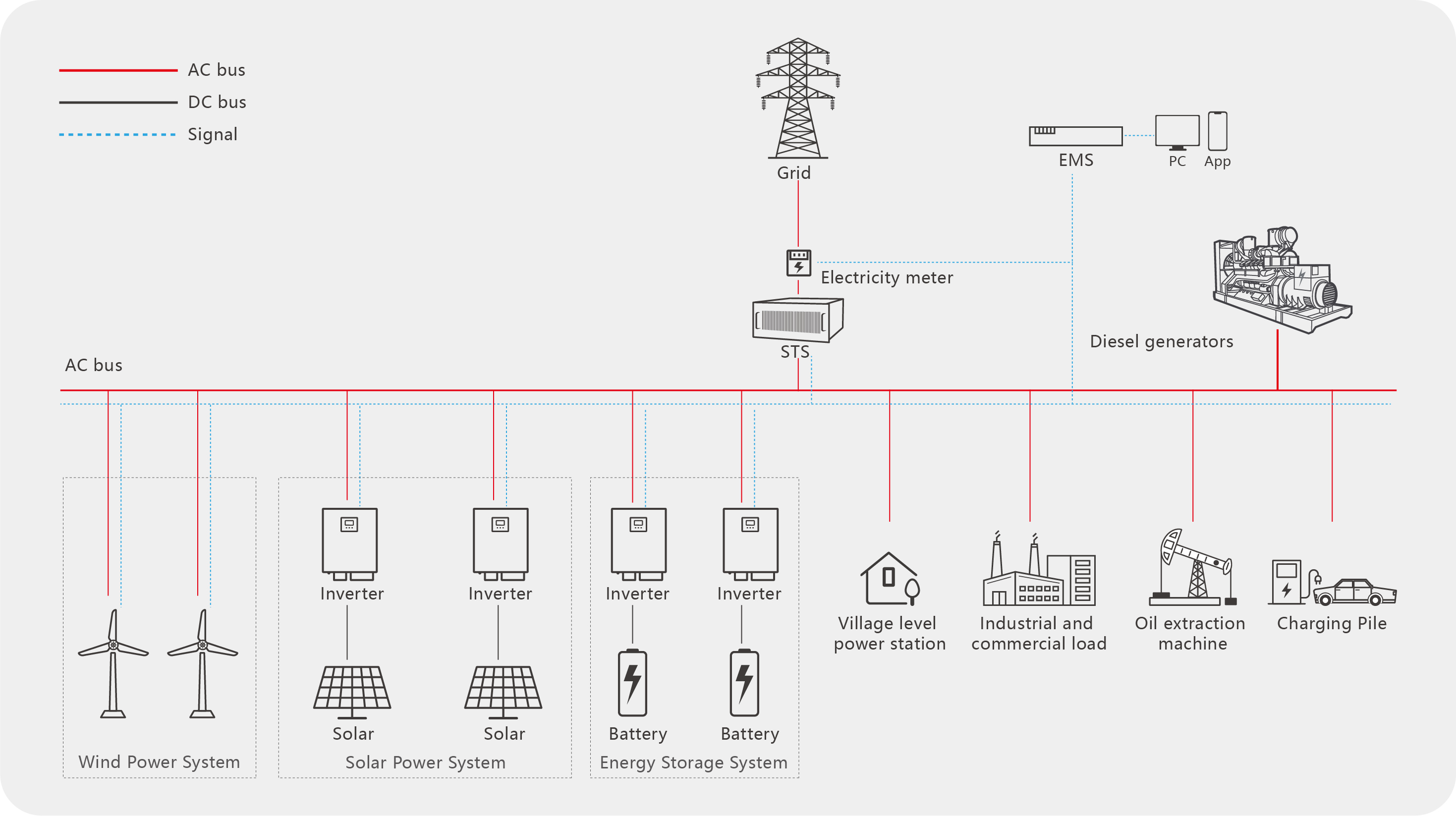 Основные технологии микросетей
Основные технологии микросетей
Sep 09, 2024
Ключевые технологии умные микросети в основном включают следующее:(I) Технология производства возобновляемой энергииВ настоящее время интеллектуальные микросети в основном основаны на различных возобновляемых источниках энергии, а потребляемая мощность в основном представляет собой фотоэлектрическую, ветровую, водородную энергию, природный газ, биогаз и другие зрелые технологии производства электроэнергии.(I) Ключевые технологии хранения энергииХранение энергии является неотъемлемой частью микросетей. Он может сыграть роль в сглаживании пиков и заполнении впадин в микросетях, значительно повышая эффективность использования прерывистой энергии. Благодаря постоянному развитию науки и техники нынешние накопители энергии в основном включают в себя аккумуляторные накопители энергии, накопители энергии маховика, сверхпроводящие магнитные накопители энергии и накопители энергии суперконденсаторов. Более развитой технологией хранения энергии являются свинцово-кислотные аккумуляторы, но они имеют проблемы короткого срока службы и серьезного загрязнения свинцом. В будущем выход на рынок высокопроизводительных, недорогих и высококачественных графеновых батарей принесет весну в индустрию хранения энергии. Текущая стоимость разработки технологии хранения энергии относительно высока. Страны всего мира работают над этой технологией, но все они имеют общую цель – достичь цели «низкая стоимость + высокое хранение энергии».(II) Интеллектуальная технология диспетчеризации оптимизации энергопотребления микросетейВ отличие от традиционной системы диспетчеризации электросетей, интеллектуальная система диспетчеризации микросетей относится к горизонтальной технологии диспетчеризации с дополнительной оптимизацией нескольких источников энергии, которая может полностью исследовать и использовать прямую взаимодополняющую взаимозаменяемость различных источников энергии, а также может не только реализовывать выработку тепла. , электричество и холод, но также реализуют энергетический обмен свет/электричество, тепло/холод, ветер/электричество, постоянный/переменный ток. Стратификация различных источников энергии в связях источник-накопитель-нагрузка обеспечивает упорядоченную диспетчеризацию каскадной оптимизации для достижения наилучшей эффективности использования энергии.(III) Интеллектуальная технология защиты и управления микросетямиВ интеллектуальной микросети имеется несколько источников питания и несколько нагрузок. Изменения нагрузок и колебания источников питания должны регулироваться и контролироваться системой накопления энергии или внешней энергосистемой. Регулирование, переключение и управление этими источниками питания осуществляет центр управления микросетью. Помимо мониторинга параметров мощности, состояния переключателя, качества электроэнергии и энергетических параметров каждой новой системы производства энергии, системы хранения энергии и нагрузки, центру управления микросетью также необходимо экономить энергию и улучшать качество электроэнергии.
ЧИТАТЬ ДАЛЕЕ

 Русский
Русский English
English Français
Français Deutsch
Deutsch Italiano
Italiano Español
Español Português
Português عربي
عربي 日语
日语 ไทย
ไทย




 IPv6 ПОДДЕРЖИВАЕТСЯ СЕТЬЮ
IPv6 ПОДДЕРЖИВАЕТСЯ СЕТЬЮ
